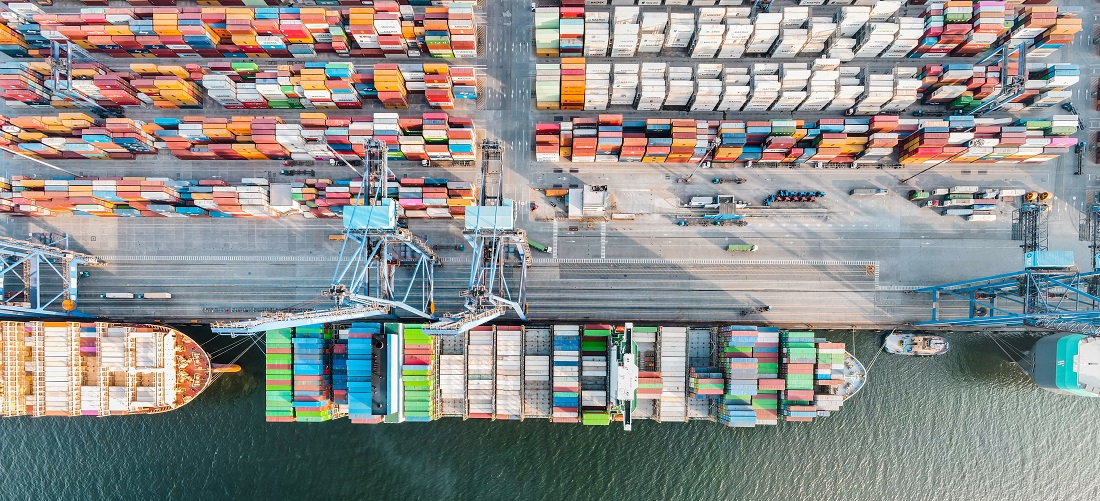
WTO Predicts Major Slowdown in Global Trade Growth
Oct, 05, 2022 Posted by Gabriel MalheirosWeek 202240
The World Trade Organization (WTO) predicts a major slowdown in the growth of global trade. While the WTO raised its projection for global goods trade growth to 3.5% this year from a previous estimate of 3%, the figure next year will be just 1%, as reported on Wednesday, October 5.
“Strong headwinds” battering the world’s major economies while poorer nations face food insecurity and debt problems forced the WTO into a big downward revision from its previous estimate for global goods trade in 2023 to expand by 3.4%.
“The projection for 2023 is considerably bleaker,” said Ngozi Okonjo-Iweala. She warned, however, that trade restrictions could only exacerbate an already difficult situation. “Trade can help solve the challenges of today and tomorrow,” she argued.
The WTO projection takes into account a rise in global Gross Domestic Product (GDP) of 2.8% in 2022 and 2.3% in 2023, well below the previous forecast of 3.2%.
Crises like the conflict in Ukraine, the cost of energy, inflation, and the increase in interest rates in developed nations continue to impact trade and production. For example, input costs increased by 60% in August, food costs increased by 11%, energy prices increased by 78%, and cereal prices increased by 15%. Demand for imports is thus expected to decline accordingly.
In Europe, the rise in energy costs caused by the Russian invasion of Ukraine resulted in a compression of household expenses and increased costs in the industrial sector.
In the United States, the tightening of monetary policy will impact the spending on the areas of the economy that are more sensitive to interest rates, such as housing, the automotive sector, and fixed capital investment.
China continues to face new waves of Covid-19 and production disruptions caused by weak external demand.
Unsurprisingly, the Middle East will be the region with the highest growth in trade volume, both in exports (14.6%) and imports (11.1%) in 2022.
According to the UN organization, exports from South America and Africa also exceeded expectations in the first half of the year. In addition, imports from South America, Africa, and the Middle East were also more significant than expected, as higher commodity prices boosted export earnings, allowing countries in these regions to import more.
For South America, the WTO expects to see export growth dropping from 1.6% this year to 0.3% next year in terms of volume. In the case of imports, growth rates went from 5.9% this year to a contraction of 1% next year – which reflects a significant slowdown in the region’s economy.
The WTO also predicts that rising fuel, food, and input costs may lead to food insecurity and excessive debt in developing nations. The real GDP of South America is anticipated to decline from 3.7% this year—which is half of the 7.2% in 2021—to 1.6% in 2023.
Some countries affected by high international prices have reduced consumption and imports. For example, since March, the quantities of wheat imported have decreased in Bolivia (-69%), Jordan (-41%), and Ecuador (-30%).
The WTO places emphasis on the evolution of trade in terms of volume. However, the analysis shows that the value of all merchandise trade increased by 17% year over year in the second quarter, compared to 22% in the final quarter of 2021. In other words, trade increased in value by two figures due to rising prices while volume continued to grow by a figure.
WTO projections are in line with those of other international organizations. For example, the Organization for Economic Co-operation and Development (OECD) predicts that in 2023 real global income could be about US$2.8 trillion lower than expected a year ago (a drop of just over 2% of GDP in terms of purchasing power parity).
For its part, the United Nations Agency for Trade and Development (Unctad) points out the risks of an “induced global recession” in the wake of interest rate hikes in developing countries, which leave them “exposed to cascading debt crises, health, and climate.”
Source: Valor Econômico
To read the full original article, please go to: https://valor.globo.com/mundo/noticia/2022/10/05/omc-prev-queda-em-expanso-do-comrcio-global-para-1-pontos-percentuais-em-2023.ghtml
-
Coffee
Mar, 13, 2020
0
Soluble coffee exports grew 9.17% in first two months despite coronavirus threat
-
Trade Regulations
Jul, 17, 2019
0
Bolsonaro to propose Mercosur-US free trade agreement
-
DW 2020 EN
Jan, 20, 2020
0
DATAMARWEEK 21st JANUARY 2020
-
Ports and Terminals
Jan, 24, 2024
0
Port of Maceió qualified for Brazil’s Federal Privatization Program


